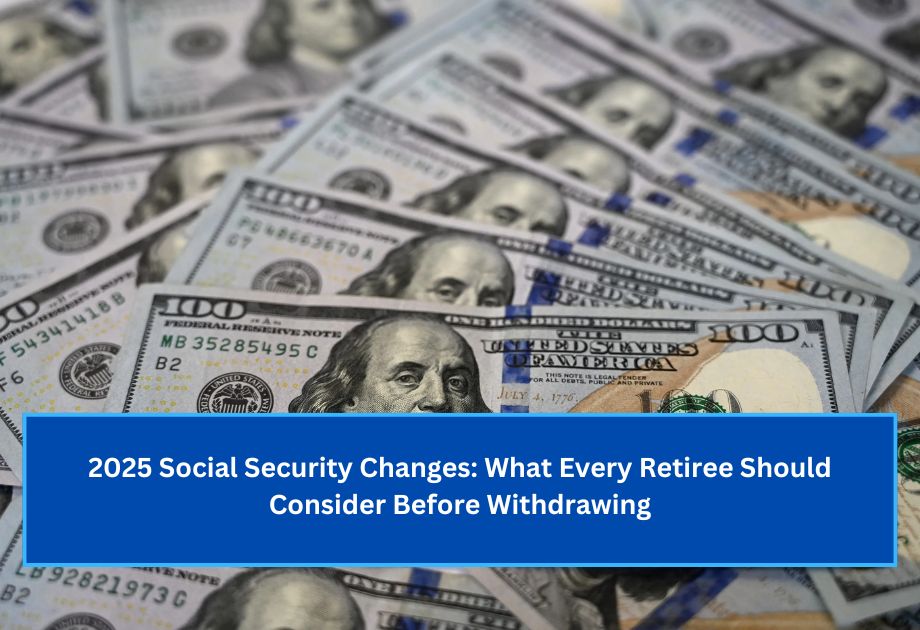When planning to withdraw Social Security benefits in 2025, there are several factors you need to consider to make the most out of your benefits. Whether you’re already a recipient or planning to start, understanding the rules and implications is essential for maximizing your payout. This guide will help you navigate through the most important things to know before making your decision.
Understanding the Full Retirement Age (FRA) Impact
Your Full Retirement Age (FRA) plays a crucial role in determining how much Social Security benefits you’ll receive. For those born in 1960 or later, the FRA is 67. If you wait until you reach your FRA, you will receive 100% of your entitled benefits. However, if you choose to withdraw early, before reaching FRA, your benefits will be reduced, which can have a lasting impact on your income.
How Inflation Affects Social Security Payments
Inflation has a direct effect on Social Security payments. The Cost of Living Adjustment (COLA) is used to adjust benefits each year based on inflation. In 2025, the COLA will be calculated using the current inflation rate, which could increase your monthly payments. Higher inflation rates typically result in higher payments, providing better financial stability.
Tax Implications on Social Security
Depending on your total income, Social Security benefits may be taxable. If your combined income is above $25,000 for individuals or $32,000 for couples, up to 85% of your Social Security benefits may be taxed. This means you might face unexpected tax liabilities, so it’s important to plan ahead to avoid surprises when filing your taxes.
Effect of Delaying Benefits
If you’re able to delay taking your Social Security benefits past your FRA, you could see an increase in your monthly payments. For every year you wait, your payments can increase by up to 8% until you reach the age of 70. While this strategy can result in higher benefits, it also means that you’ll have to wait longer to access your money.
Spousal and Survivor Benefits
For married couples, spousal and survivor benefits are also important considerations. By delaying benefits for the higher-earning spouse, you can increase the amount available for survivor benefits, ensuring better financial security for the surviving partner after one spouse passes away.
Health Considerations and Retirement Planning
Your health is another key factor when deciding when to start withdrawing Social Security benefits. If you’re in poor health, you might benefit from withdrawing early to enjoy your benefits while you can. However, if you’re in good health and expect to live longer, it might be better to delay your benefits for higher payments later.
| Factor | Consideration | Impact on Benefits | Advantage | Disadvantage |
|---|---|---|---|---|
| Full Retirement Age | Waiting until 67 | Full benefits | Higher payments | Delayed income |
| Inflation Adjustment | Based on COLA | Adjusts payments | More stability | Variable increase |
| Taxable Income Threshold | $25,000 (single) / $32,000 (couple) | Tax liability | Potential savings | Higher taxes |
| Delaying Benefits | Increase by 8% per year | Higher benefits | Larger payouts | Delayed access |
Conclusion
Planning for Social Security benefits in 2025 involves considering many factors, from your health to the impact of inflation and tax rules. By understanding these aspects, you can make informed decisions that work best for your financial situation and retirement goals. Keep in mind the importance of timing and strategy, and consult a financial advisor to ensure you get the maximum benefits available.
FAQ’s
What happens if I delay taking Social Security benefits?
Delaying your benefits until after your Full Retirement Age can increase your monthly payments by up to 8% per year until age 70.
How is Social Security affected by inflation?
Social Security payments are adjusted annually based on the Cost of Living Adjustment (COLA), which helps account for inflation and keeps payments in line with rising costs.
Are Social Security benefits taxable?
Yes, if your combined income exceeds $25,000 for individuals or $32,000 for couples, up to 85% of your benefits may be taxable.

